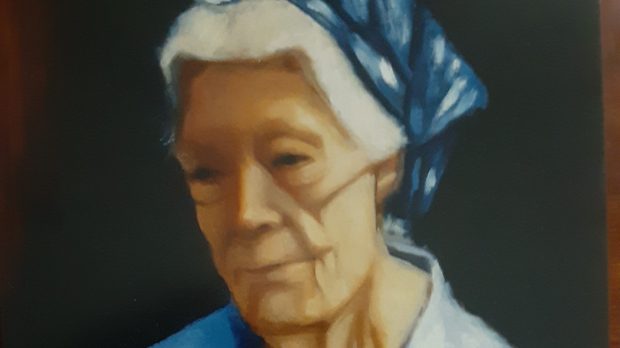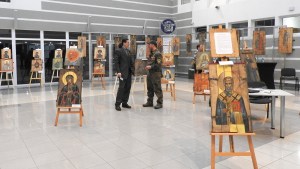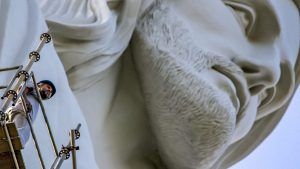Geoffrey Gneuhs has seen a lot of ugliness in his life – or things that some people might call ugly. As a chaplain at the Catholic Worker’s houses of hospitality in New York City in the 1970s and 1980s, he lived amid squalor – ministering to people whose lives were in shambles, who were living on the street, who were wracked with mental illness and alcoholism. He had to contend with the unsettledness of living in a rat-infested building down the street from a large contingent of Hells Angels.
But amid all that ugliness, one can find beauty – by seeking out the human soul at the core of each individual situation. Working alongside Dorothy Day, one of the founders of the Catholic Worker, that’s what Gneuhs did.
As an artist and as a Christian who does a lot of thinking about the human condition, he found beauty, and continues to find it today. As a painter, he strives to help others to see the Divine in places they might not expect it.
“My great desire was to paint beauty,” Gneuhs said in a recent interview, as he described his early forays into the art world, studying the craft at Providence College in Rhode Island, and in European and New York art schools.
Now 74, Gneuhs (he explains that his name is pronounced “guh-NOOZE,” somewhat like “Good News”) continues to paint in a studio inside a historic New York City church. Though that church – St. Jean Baptiste on Lexington Avenue at 76th Street – can be compared to the glorious churches of old-world Europe, life out on the streets in many ways is still a mess. In fact, crime, drug addiction, homelessness and mental illness have gotten so bad in the Big Apple that Mayor Eric Adams recently announced that people with severe, untreated mental illness on the streets and subways will forcibly be taken to hospitals.
But for a traditional artist who embraces realism like Gneuhs does, the ugliness of social problems pales in comparison to some of the art work he has seen in galleries and museums – in New York and elsewhere.
“You put a white canvas in the Whitney [Museum of American Art], and people go oooh and aaah. What is that all about?” he said. “Or you have an artist like Damian Hirst, who over the years has put animal heads in formaldehyde, and that’s displayed in all the museums. Or, many years ago, Piero Manzoni displayed a very large pyramid with his excrement in cans. And this was featured at the Whitney Museum. That’s how pathetic our culture is now.”
Gneuhs sees such art as “solipsistic – even narcissistic.” He, on the other hand, takes inspiration from St. Thomas Aquinas. On the inside of the door to his studio, high up in the north tower of St. Jean Baptiste, is a quote from the Summa Theologica, in which Aquinas reflects on the human creature – “that which is found to be most perfect in all of nature, that is a subject that subsists in a rational nature.”
Dominican roots
Quoting that great Dominican theologian is appropriate, as Gneuhs spent many years in the Order of Preachers. Born in Ohio and reared in a Chicago suburb, he derived some of his love of art from his mother, who was herself a budding artist. He recalls as a child always being interested in art.
“We made visits to museums in Chicago,” he recalled. “For Christmas, I always asked for these little paint-by-numbers kits.”
Dominican Prep School in Oak Park, Illinois, gave him “a superb education,” he said, “but back then there were no art classes or anything. Even at Providence College, where I did my undergraduate degree, it was only in my senior year that they were trying to start an art department.”
The priest who started that program later invited Gneuhs to Pietrasanta, Italy, a center of artistic creativity, where he met Dominican Fr. Thomas McGlynn – best known as the sculptor of the statue of Our Lady of Fatima at the famous shrine in Portugal. McGlynn, who consulted thoroughly with Sister Lucia, one of the visionaries at Fatima, introduced the young Gneuhs to the sculptor Jacques Lipchitz, who has been compared to Auguste Rodin.
Meeting Dorothy Day
Indeed, there was much to inspire the young Gneuhs to artistic endeavors, but he had another calling as well, and as a novice at the Dominican House of Studies in Washington, D.C., it wasn’t easy to get permission to take even one art class on the side.
Seminarians were expected to do volunteer work, however, and in 1972, he learned about an effort to help the poor in the nation’s capital.
“At that time in Washington and in the country, there wasn’t an overt concern for the poor and homeless, either in secular society or in the more formal, parochial church, except for this woman, Dorothy Day,” he recounted. “Back then, other than the White House and the capitol, the city was pretty derelict, other than the rich neighborhoods, where the embassies are.”
And on New York Avenue, an organization called the Community for Creative Nonviolence was opening up a soup kitchen. Gneuhs signed up.
It was through the Community for Creative Nonviolence that he first met Dorothy Day. She stayed at the Community’s headquarters when she came to give a talk at George Washington University, under the auspices of Pax Christi. Gneuhs and some of his coworkers accompanied Day to the talk, but when they arrived, the young seminarian was asked to run back and fetch a cane that doubled as a tripod stool that she used and had forgotten. Gneuhs complied, and “she was ever so grateful.”
He ended up volunteering at the Catholic Worker’s St. Joseph House on East First Street in Manhattan in the summer of 1974, where he got to know Day a little better.
He returned to Washington to finish his studies, and then the Dominicans sent him to Yale Divinity School for graduate work. He chose to write about the cofounder of the Catholic Worker, Day’s mentor, Peter Maurin.
“It was through that experience that I decided that even though I loved the academic world, after all these years of studying and training, I really felt like – for lack of a better phrase – getting my hands dirty and start doing something, through ministry,” Gneuhs said. “So I would periodically visit New York and keep up with the folks at the Catholic Worker. I felt very compelled that that’s where I wanted to do ministry.” After “a lot of back and forth with superiors,” he was assigned as chaplain at the Catholic Worker.
A calming presence
By that time, Day was in her late 70s and was spending more time at her cottage on Staten Island, and, when she was in the city, in her room upstairs at Mary House, one of the two houses of hospitality the Catholic Worker ran in the East Village.
“When I did arrive, she said how grateful she was to my superiors,” Gneuhs remembered. “She read my thesis on Peter Maurin. She said ‘I’m so glad someone wrote about him and not me.’”
Gneuhs remembers her as gracious and witty and open to sharing a glass of sherry in the evening.
The young chaplain’s duties included celebrating Mass at the two Catholic Worker houses and providing spiritual and pastoral care to staff, volunteers, the 40-50 homeless women who lived at Mary House, and people in hospital, but also practical duties like cooking, serving on the soup line, or cleaning the toilets.
Because of Day’s love of Evening Prayer, the house had daily Vespers.
“In a Catholic Worker situation, which was somewhat anarchic or loose, we’d always try to have Vespers, and Dorothy would try to come down [from her room] for it,” he said.
“No one was forced to come to Mass or prayer, but if Dorothy that night was coming down for Vespers, the chapel would fill up.”
Her presence tended to have a calming effect. “Think of a house of people not on medication. Some are marvelous eccentrics, but they’re hard to live with; they’re crazy, schizophrenic,” he said. “You’re feeding them in the dining room. We would sit together, and sometimes fights would break out and it could be exhausting. But occasionally Dorothy would come down to the dining room to eat. And it was marvelous because the whole room would be demure and behaved. I said, ‘Dorothy I wish you would come down more often.’”
At one point, Gneuhs lived in a building nearby that was infested with rodents. “I remember going into this big old building at night, running up the stairs hoping not to see a rat,” he recalled.
The neighborhood wasn’t much better – “awful,” in fact, according to Gneuhs, “full of drugs and Hells Angels.” The infamous motorcycle club had a place down the street where some 200 bikers hung out. They often rode their bikes around the streets late at night, stopping right in front of the Catholic Worker. “They would come from the other end of the block and in front of Mary House would gun their engines,” Gneuhs said.
Day’s bedroom faced the street, and Gneuhs wondered how she tolerated the noise. “I said, ‘Dorothy, how do you do it, with these Hells Angels at 3 o’clock in the morning gunning their engines in front of our building? They always wake me up.’ She said, ‘I’m deaf in one ear, so I sleep on the good ear.’ She was always like that.”
Sermon on the Mount
When Dorothy Day passed away on November 29, 1980, Gneuhs preached the homily at her funeral at nearby Nativity Church. “For sure, the Sermon on the Mount sums up the entire life and spirit of Jesus, and it is an invitation which Dorothy with consummate conviction accepted,” he said during the eulogy. “She realized that love is an exchange of gifts: the gift of faith, and she in turn offered the gift of her life lived in faith, given for us and thousands of others. The Sermon on the Mount, along with the 25th chapter of St. Matthew, the cornerstone of the Catholic Worker movement, is not some general guide or optional outline. It is the very expression of the flesh and blood of Jesus — the Incarnation of Truth.”
Day’s cause for canonization is underway, and Gneuhs serves on the steering committee of the Dorothy Day Guild, which is promoting the cause. A painting he did of her graces the Guild’s prayer card. He did the painting from a photograph of her, as she had already died, but it was a photo for which he had been present – depicting her coming out of Nativity Church.
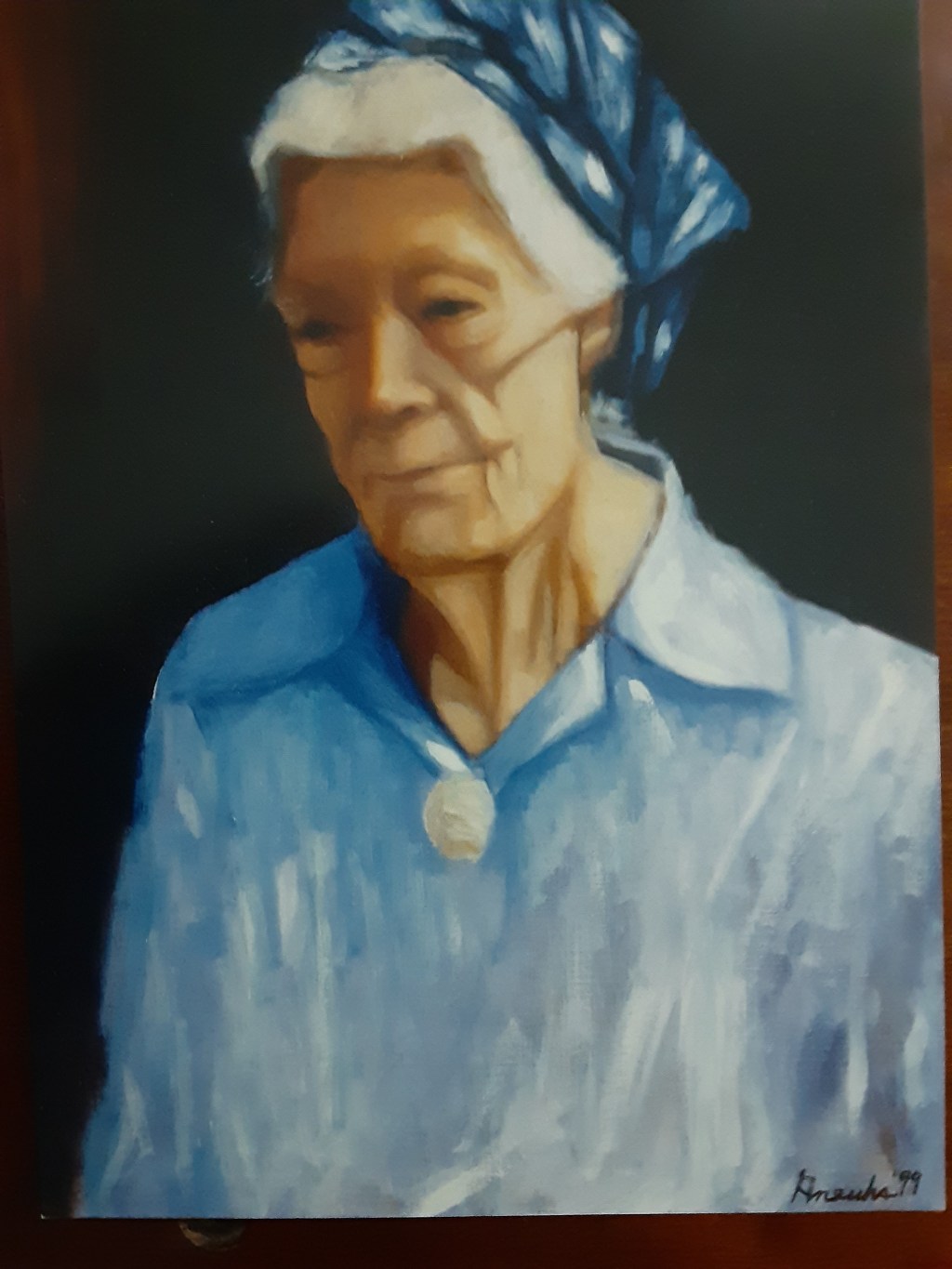
Gneuhs is aware of the objections some Catholics have to Day’s cause for canonization.
“Throughout her life and career there are those who thought she was a communist,” he said. “But that’s ridiculous, because first of all her philosophy was decentralism. Communism is rather centralized. She very firmly believed in localism, a decentralized forming of societies and communities.”
She even opposed some of the policies of Franklin D. Roosevelt, such as Social Security, which today we take for granted. In a 1945 issue of the Catholic Worker newspaper, she wrote, “We believe that the social security legislation now hailed as a great victory for the poor and for the worker is a great defeat for Christianity. It is the acceptance of force and compulsion.”
“In my soul”
Following Day’s death and Gneuhs’ separation from the Dominicans, he returned full time to his artistic endeavors, formally studying at the New York Academy of Art and the Art Students League in Manhattan. Providentially, he discovered studio space at St. Jean Baptiste. The church is staffed by the Blessed Sacrament Fathers, who are devoted to Eucharistic adoration. Gneuhs’ studio leads out to the choir loft, and on a quiet day, he can sit there in the presence of the Blessed Sacrament.
Granted, not all of Gneuhs’ artistic subjects are pretty. His cityscapes don’t try to hide the dirtiness of urban life. But there’s more to life than order and cleanliness. As Picasso’s painting of Guernica contains the truth of the devastation of war, if truth is present in a painting, then beauty is as well.
“When I give a talk I emphasize the transcendentals: beauty, truth, goodness. I believe very much in that,” he said. “Beauty can lead us to an understanding of transcendence. Those concepts do exist in reality, even though we have a culture that mocks them.”
He recognizes that discussion of the “transcendentals” is foreign to many people today, and in a post-truth world it sometimes seems to be more alien than ever. All the more reason to keep evangelizing.
But that mission sometimes seems to be getting more challenging.
“To a certain degree, not formally, even in the spiritual life we have to be formed,” Gneuhs said. “And if we have a culture that has no principles or values, how do you form people to appreciate and open up and be in awe of wonder or beauty?”
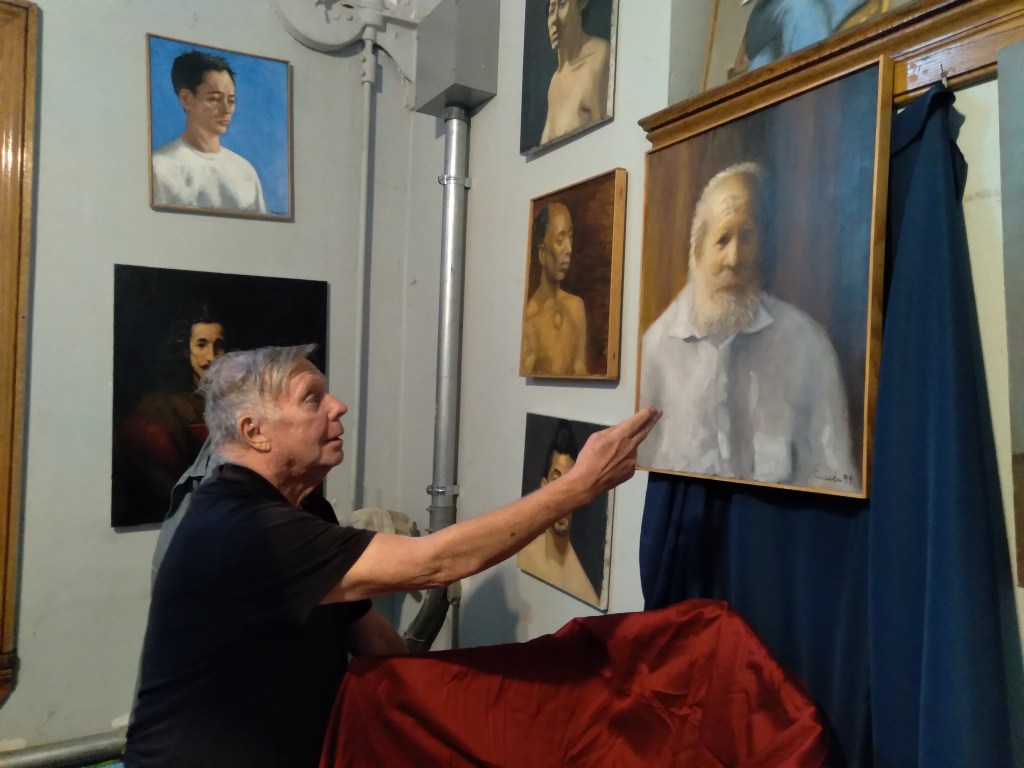
It’s important that people don’t turn away because of Gneuhs’ identity as a Catholic artist. He points to cityscapes and landscapes and portraits on the walls of his studio or stacked up on the floor that do not constitute “overt recognition of the divine, but still it’s a recognition of beauty in various forms.”
“Other religions have given the world great art or beauty,” he pointed out. “That in itself is proof, I think, that beauty does exist, but it has to exist outside of ourself, not when we create art to express me or my feelings.”
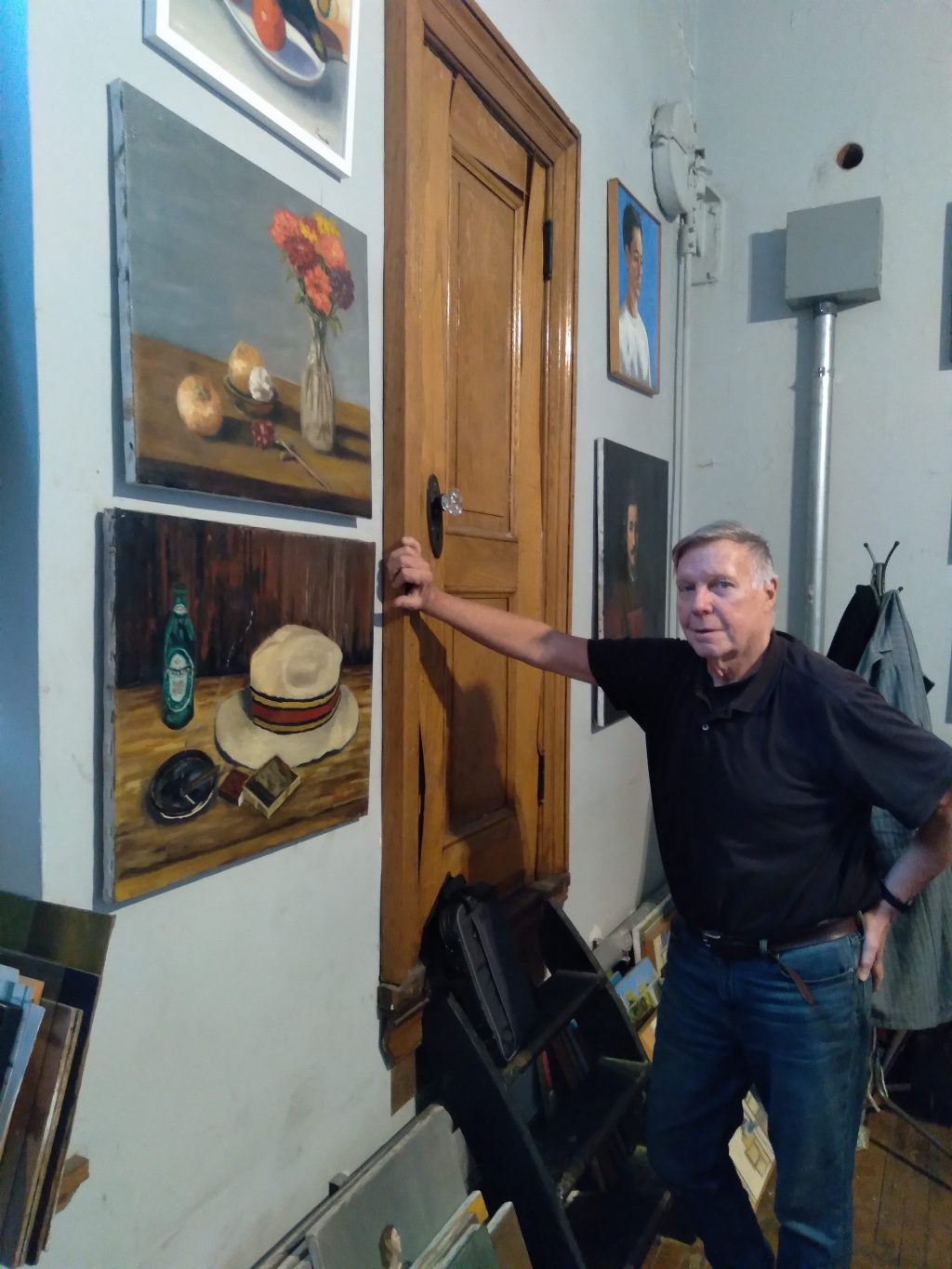
And where is he headed with his artwork?
“Well, I’ll just keep at it,” he said, explaining that he’s open to commissions. “It’s very much part of my soul.”
